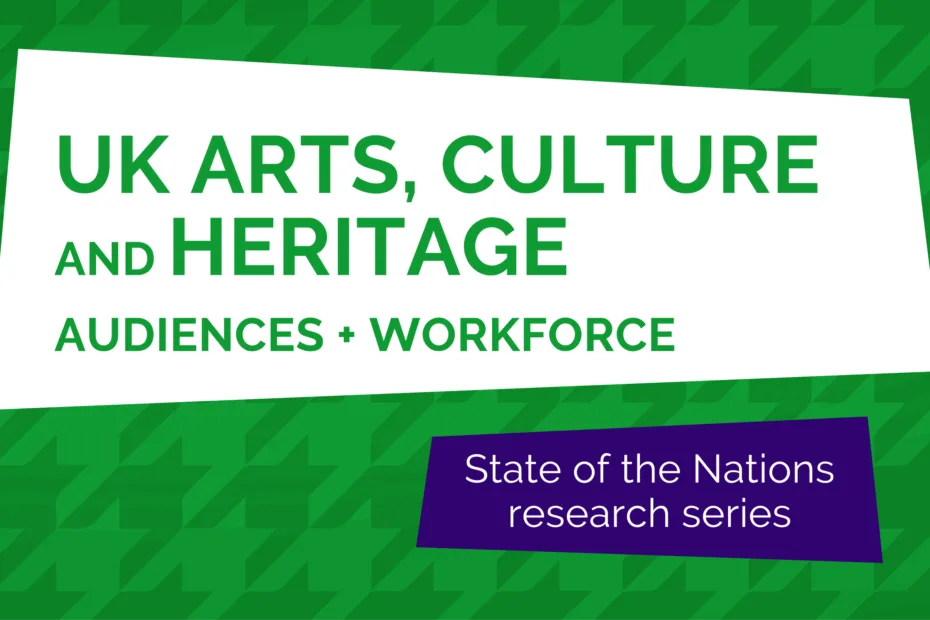Embargoed 00.01 Wednesday 15 May 2024 (BST)
For the first time, census data has been used to provide an in-depth map of the arts, culture and heritage workforce across England, Wales and Northern Ireland, enabling every Local Authority to see the number of these workers – from artists and actors to museum workers and musicians – based in their area.
The data is considered ‘game-changing’ in terms of giving local policymakers the tools to understand their arts, culture and heritage sub-sectors, identify local specialisms and help inform development plans and investment decisions. The data further provides granular detail on the demographics of the arts, culture and heritage workforce by ethnicity, age, disability, gender, sexuality and religion to help inform Equality, Diversity and Inclusion planning.
The data has been published as part of a new report ‘Arts, Culture and Heritage: Audiences and Workforce’ published by the Creative Industries Policy & Evidence Centre (Creative PEC) as part of its ‘State of the Nations series’. The research was undertaken by the Creative PEC’s research team at the University of Sheffield.
It shows significant inequality in the arts, culture and heritage sector workforce, confirming findings of previous Creative PEC research. It finds:
- The proportion of people working across arts, culture and heritage who are White is 90%; higher than the general workforce figure at 85% according to Labour Force Survey data from 2023.
- In terms of class inequality, 60% of arts, culture and heritage workers grew up in a household where the main income earner was in a ‘managerial or professional’ role; the equivalent figure for the whole workforce is 43%.
- In ‘Film, TV, video, radio and photography’ just 8.4% of people identify as being from a working-class background.
- Women comprise only 34% of ‘managers and directors in the creative industries.’
Bernard Hay, Head of Policy, Creative PEC said:
“This research shows that the likelihood of someone participating or working in arts, culture and heritage still varies significantly depending on a range of factors. These include gender, disability, ethnicity, social class, or geographic location. It also shows the picture can be very different depending on the type of activity or job. Viewed together and in the context of funding challenges for UK arts, culture and heritage, as well as a cost-of-living crisis, this report shows that we still have a long way to go to address social inequalities in many parts of the sector.
Whilst we can already see powerful community, industry and government led initiatives working to tackle this, now is the time for ambitious policymaking to help shift the dial. We hope our continued monitoring of data in this area will provide a useful reference point for those working to address social inequalities in the sector.”
Dr Mark Taylor, lead report author says:
“Our new report confirms ingrained inequality across several demographics, using census data for the first time to provide this level of insight. However, we also identify ways in which arts, culture and heritage could be considered more inclusive than other sectors. For example, workers are more likely to be LGBTQ+, and in terms of participation in some creative activities for example creative writing, disabled people are more likely to participate. Overall, though the picture is one of sustained inequality in both workforce and audience diversity across arts, culture and heritage.”
The report uses the latest available data from 2023 to analyse ‘participation’ in arts, culture and heritage and finds 90% of people in England engage in ‘the arts’ in some way every year.
Yet there is substantial differentiation in this engagement. For example: 41% of White people had visited a ‘historic landscape’ in the past 12 months compared to just 11% of Black people. And across every form of cultural activity, people with a disability were less likely to have ‘attended’, yet when it comes to ‘participation’ in some activities such as ‘writing stories, plays and poetry’ disabled people were more likely to have engaged.
The report authors suggest further research is needed to understand a more nuanced picture of cultural engagement; for example, the research doesn’t measure engagement in heritage beyond ‘visits to heritage sites’ and is not able to report on people who engage in cultural activities through volunteering or as part of their studies or employment.
Professor Hasan Bakhshi, Director, Creative PEC says:
“The arts, culture and heritage sectors are an economic force in their own right as well as more obviously being at the heart of the UK’s public and cultural life. In order to support policy development, the sector requires high-quality workforce and audience data, just as we need data about demand and supply in other industries.
Herein lies the function of the Creative PEC’s State of the Nations series which aim to report regularly on key data for policymakers not just across the arts, culture and heritage sectors but across the wider creative industries too.”
The report was launched during an online event in which a panel of industry experts – Shanaz Gulzar, Creative Director, Bradford UK City of Culture 2025, Peggy Hughes (Hon FRSL), CEO, National Centre for Writing, Kelly Parish, Senior Manager, Diversity, Arts Council England and Lara Ratnaraja, Creative PEC Industry Champion and cultural consultant – responded to the findings.
/ENDS
